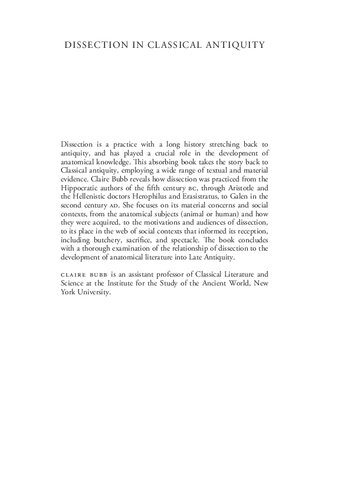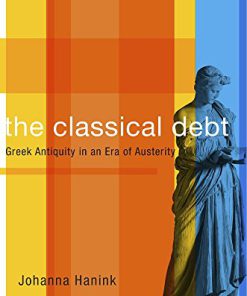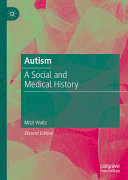Dissection in Classical Antiquity A Social and Medical History 1st edition by Claire Bubb 9781009159494 100915947X
$50.00 Original price was: $50.00.$25.00Current price is: $25.00.
Dissection in Classical Antiquity A Social and Medical History 1st edition by Claire Bubb – Ebook PDF Instant Download/Delivery:9781009159494, 100915947X
Full download Dissection in Classical Antiquity A Social and Medical History 1st edition after payment

Product details:
ISBN 10: 100915947X
ISBN 13: 9781009159494
Author: Claire Bubb
Dissection is a practice with a long history stretching back to antiquity and has played a crucial role in the development of anatomical knowledge. This absorbing book takes the story back to classical antiquity, employing a wide range of textual and material evidence. Claire Bubb reveals how dissection was practised from the Hippocratic authors of the fifth century BC through Aristotle and the Hellenistic doctors Herophilus and Erasistratus to Galen in the second century AD. She focuses on its material concerns and social contexts, from the anatomical subjects (animal or human) and how they were acquired, to the motivations and audiences of dissection, to its place in the web of social contexts that informed its reception, including butchery, sacrifice, and spectacle. The book concludes with a thorough examination of the relationship of dissection to the development of anatomical literature into Late Antiquity.
Dissection in Classical Antiquity A Social and Medical History 1st Table of contents:
Chapter 1: Introduction
Part I: Practice
Chapter 2: Dissection in the Classical and Hellenistic Periods
- The ‘Pre-Socratics’
- Hippocratic Doctors
- Medical Performance in the Classical Period
- Aristotle and the Fourth Century
- Praxagoras and the Hippocratic On the Heart
- Herophilus and Erasistratus
- The Later Hellenistic Period
- Medical Performance in the Hellenistic Period
Chapter 3: Dissection in the Roman Period
- Private Practice and Research
- Performance for Public Display
- Performance for Advertisement
- Performance for Formal Public Evaluation
- Performance to Discredit Rivals
Chapter 4: Practical Considerations of the Dissector
- Anatomical Subjects
- Monkeys
- Other Animals
- Humans
- Other Requirements
- Tools
- Books
- Assistants
Chapter 5: The Broader Social Contexts of Dissection
- Public Performances
- Animals in the Public Eye
- Religious Practices
- Anatomy in the Popular Imagination
Part II: Text
Chapter 6: Anatomical Texts of the Classical and Hellenistic Periods
- The “Pre-Socratics”
- The Hippocratic Corpus
- Plato
- Diocles of Carystus
- Aristotle
- Praxagoras
- Herophilus
- Erasistratus
- Minor Hellenistic Authors
Chapter 7: Anatomical Texts of the Roman Period
- Rufus of Ephesus
- Marinus
- Quintus and His Students
- Quintus
- Antigenes, Aiphicianos, and Satyrus
- Numisianus, Heracleianus, Pelops, and Aelianus
- Lycus
- Pseudo-Galenic Doctor: Introduction
- Anatomy in the Papyri
- Anatomy in the Roman Intellectual Scene
Chapter 8: Galen’s Minor Anatomical Works
- On the Dissection of the Uterus
- The First Anatomical Procedures (AA[sub(1)])
- On the Dissection of the Dead and On the Dissection of the Living
- On Controversies in Anatomy
- On the Difference Between the Homoeomerous Parts
- On Bones
- On the Dissection of the Veins and Arteries and On the Dissection of the Nerves
- On the Dissection of the Muscles
- Texts on Others’ Anatomical Works
- Dissection Elsewhere in the Galenic Corpus
Chapter 9: Galen’s Anatomical Procedures and Its Innovations
- The Composition of Anatomical Procedures
- The Purpose of Anatomical Procedures
- The Audience of Anatomical Procedures
- Conclusions
Chapter 10: Epilogue – A Waxing and Waning Art
Works Cited
Index
People also search for Dissection in Classical Antiquity A Social and Medical History 1st :
what is classical antiquity
classical antiquity examples
classical antiquity art examples
what is classical antiquity in renaissance
Tags:
Claire Bubb,Dissection,Classical Antiquity
You may also like…
Uncategorized
Uncategorized
Uncategorized
Uncategorized
Uncategorized
Uncategorized











